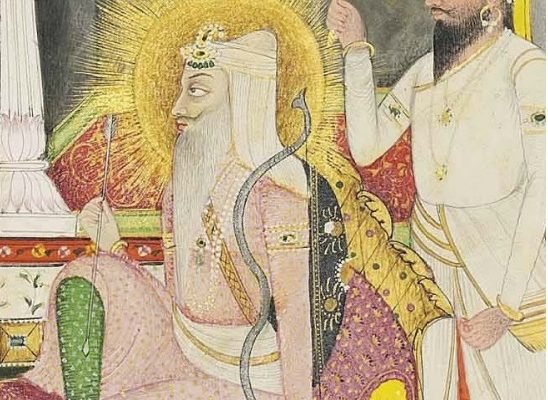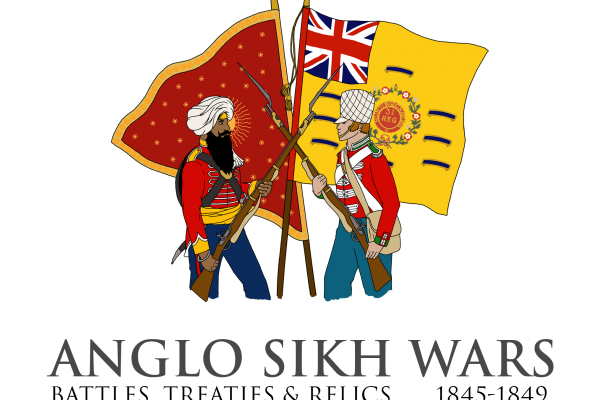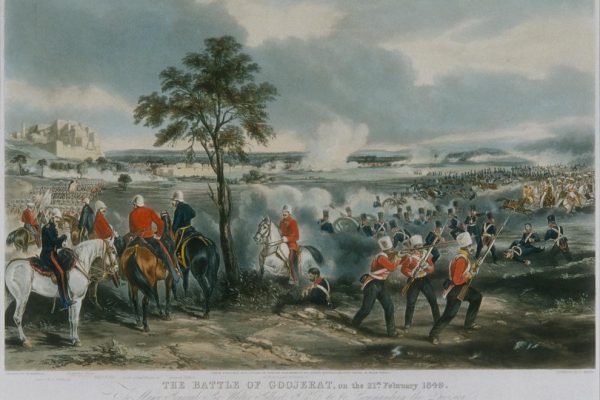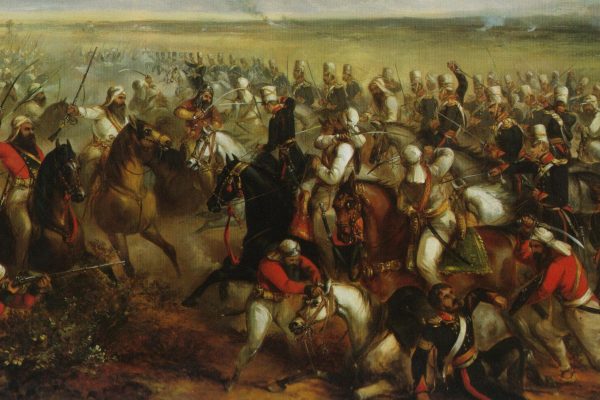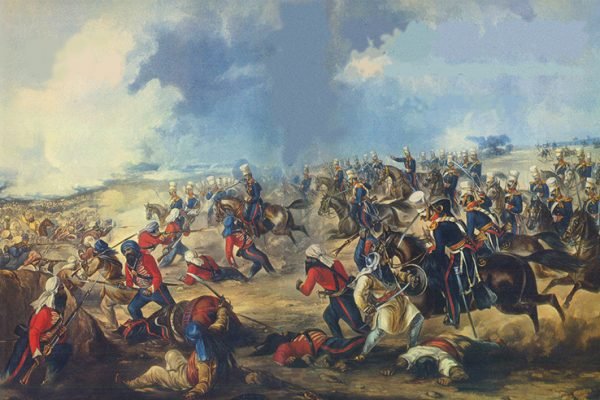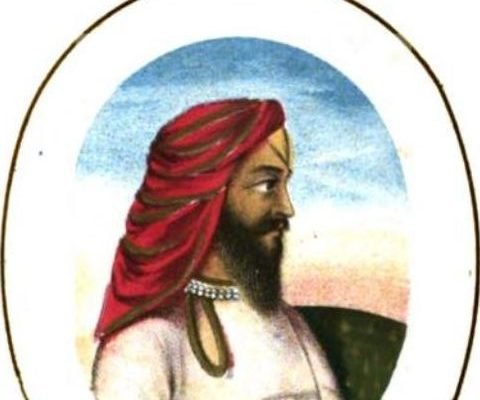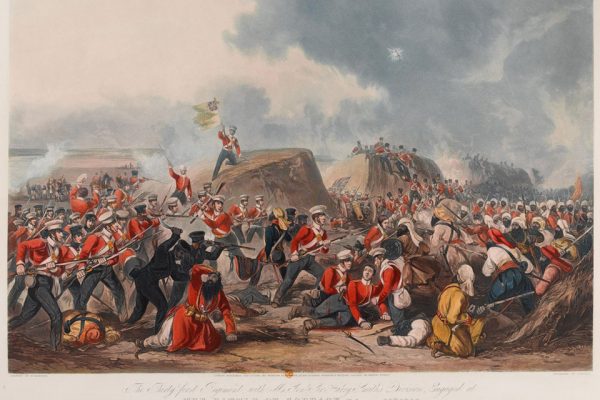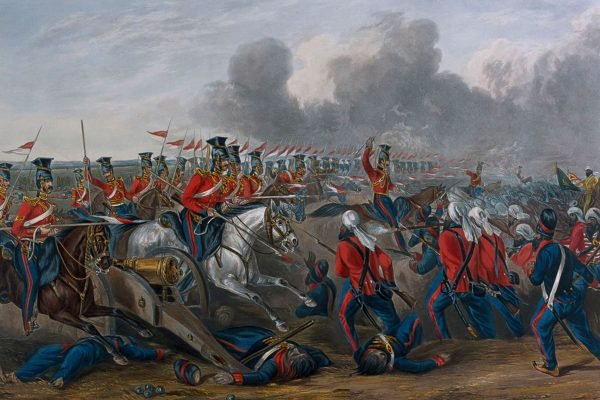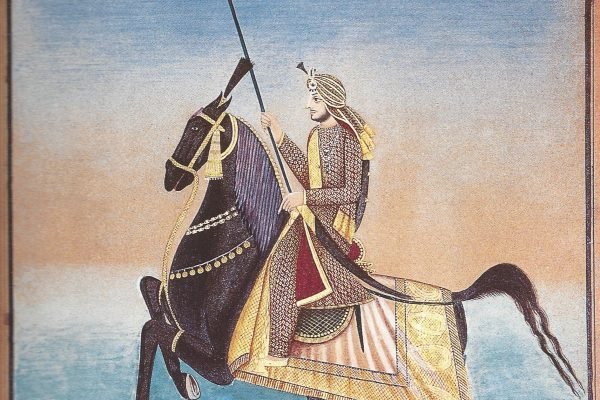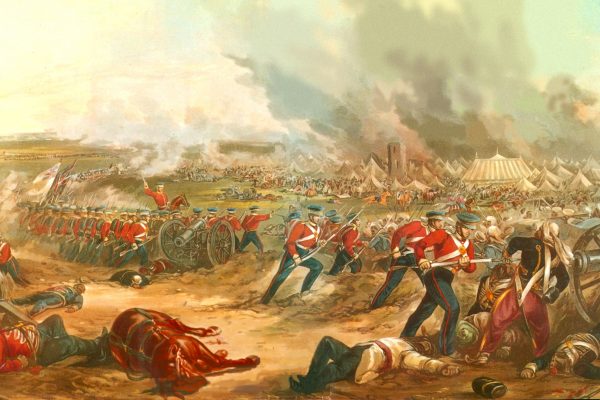Maharajah Ranjit Singh and the Sikh empire
Background Ranjit Singh, (1780-1839) was born in Gujranwala and became Maharaja (1801–39) of the Sikh kingdom of the Punjab. Ranjit Singh was the first Indian in a millennium to turn the tide of invasion back into the homelands of the traditional conquerors of India, the Pashtuns (Afghans), and he thus
UK project to bring alive the Anglo-Sikh wars
The project has been featured in the Tribune newspaper in India. Vikramdeep Johal, Tribune News Service, Chandigarh, October 24 Even as Britain salutes the Sikh contribution to its campaigns in World Wars I and II, a project has set out to achieve total recall of the two Anglo-Sikh Wars, fiercely fought
Battle of Gujarat – 21 February 1849
Martens (Henry) The Battle of Goojerat, on the 21st February 1849, hand-coloured aquatint by J. Harris after Marten, image ., R. Ackermann, 1850 Battle of Gujerat(Goojerat) 21st February 1849 After the battle of Chillianwallah, Raja Sher Singh withdrew to Gujarat where his army hastily prepared a defensive position. Gujerat and
Battle of Chillianwallah – Jan 13 1849
Led by Captain Unett, the charge of the 3rd Kings Dragoons at the Battle of Chillianwallah, Jan 13th 1849. By J Harris after H Martens, 1849, published by R Ackermann. Hugh Gough awaited further instructions from the Governor General Dalhousie after the Battle at Ramnuggar. Early in January 1849, news came
Battle of Ramnuggar – 22 Nov 1848
Charge of HM 14th Light Dragoons at the Battle of Ramnuggur’, 22 November 1848. Coloured aquatint by J Harris after H Martens, published by Rudolph Ackermann, 26 January 1851. Whilst the siege of Multan was still raging, Sher Singh Attariwala made his way to Ramnuggar (now referred to as Rasulnagar). By
The Siege of Multan 18th April 1848
Above depiction from the siege of Multan. From the book Mooltan, during and after the siege: Being twenty-one drawings, from sketches taken on the spot Unknown Binding – 1849, by John Dunlop. The Siege of Multan was a contest between the city and state of Multan and the British East
Battle of Sobroan – 10 Feb 1846
Maharani Jindan-Queen Regent of the Punjab-noted the Sikh losses in the prior battles( Mudki, Ferozeshah, Aliwal) and despatched ten horsemen with an urgent message to the veteran general, Sham Singh Attariwala. He in turn, rounded up the support of immortals of the Khalsa-the Akali Nihangs-headed by Akali Hanuman Singh. By
Battle of Aliwal- Jan 28 1846
The Battle of Aliwal HM 16th Queen’s Lancers charging the Sikh infantry at the Battle of Aliwal. Sergeant Newsome leads the front rank. Harry Smith with little difficulty captured two small forts occupied by the Sikhs on the south bank of the Sutlej River, Fategarh and Dharmkot, and moved on
Battle of Buddowal – 21st Jan 1846
Buddowal, Near Ludhiana. A temporary cessation of hostilities followed the battle of Ferozeshah. The English were not in a position to assume the offensive and waited for heavy guns and reinforcements to arrive from Delhi. Lal Singh and Tej Singh allowed them the much needed respite in as much as
Battle of Ferozeshah – 21Dec 1845
Name of battle: Battle of Ferozeshah (originally referred to as Pheru-shah) Date of battle: December 21-22 1845 Location: On the south bank of the Sutlej River in the Punjab in North West India. Generals that fought in the battle: Major Gen Sir Hugh Gough and Gen Sir Henry Hardinge, Raja Lal

